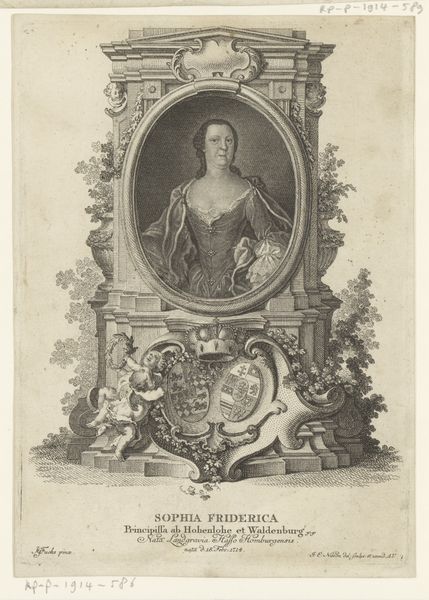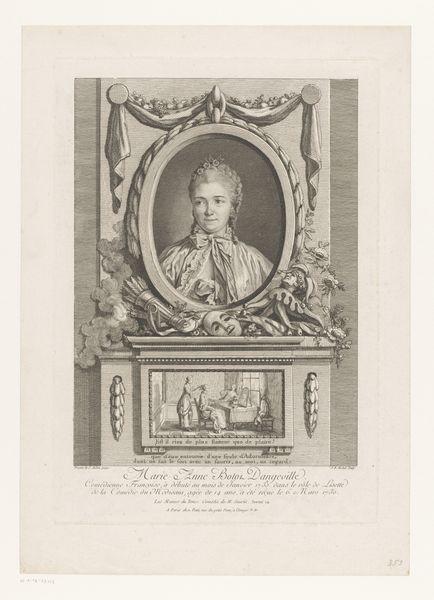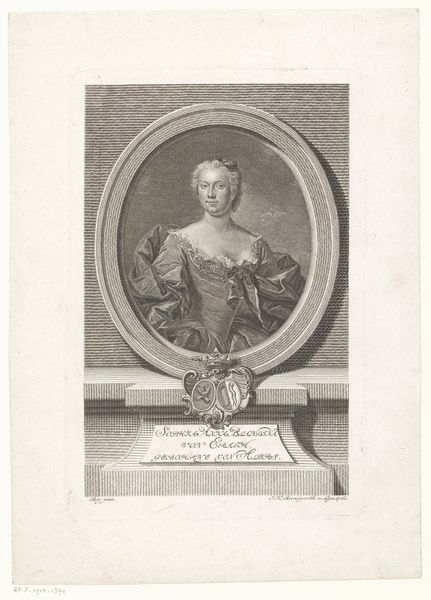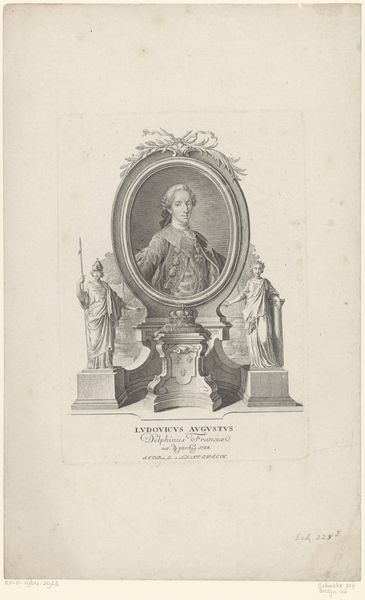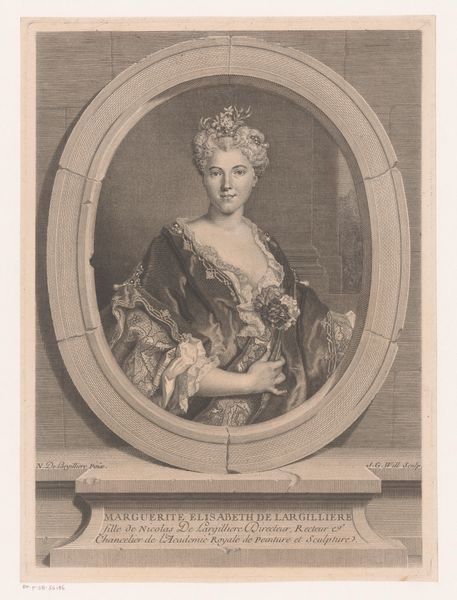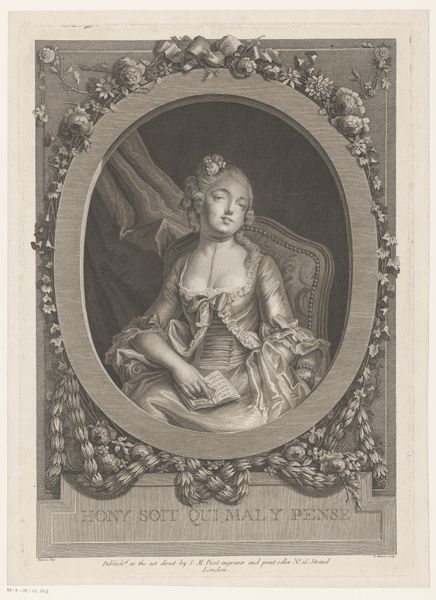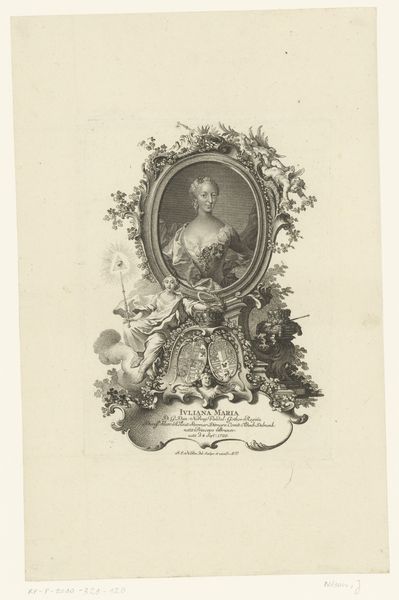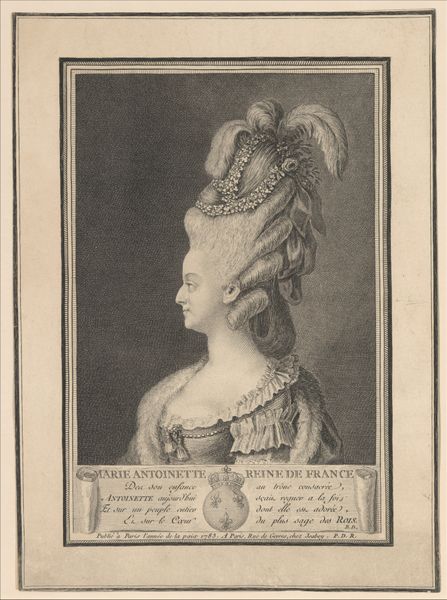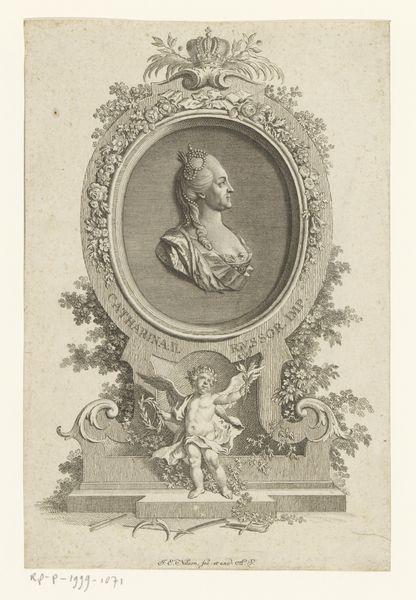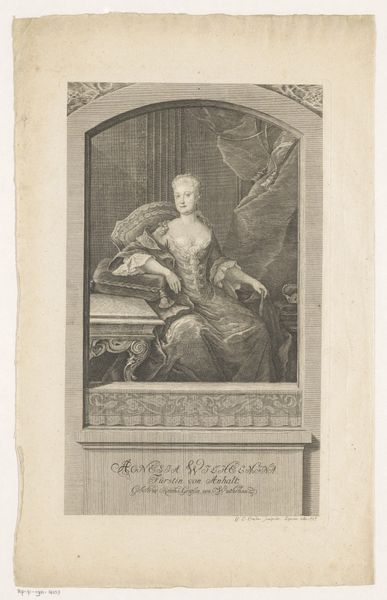
Dimensions: 338 mm (height) x 265 mm (width) (plademaal)
Editor: This is an engraving titled "Caroline Walter," made in 1777. The subject, in profile, is framed by a decorative oval, resting on what appears to be a small pedestal adorned with musical instruments. It's a very elegant portrait, almost stylized, but with a haunting quality. What strikes you when you look at this piece? Curator: The most prominent thing to note here is the deliberate staging. Caroline Walter isn't just depicted; she's presented. Notice how the frame, the musical instruments, and even the inscription at the base contribute to constructing her public image. It's an image very much meant for consumption by a specific audience. This work exemplifies how the elite used portraiture as a means of solidifying their social status and transmitting particular ideals of beauty, virtue, and accomplishment. Does that ring true, based on what you know? Editor: Definitely. It's almost like an early form of branding. It’s not just about capturing a likeness, but crafting a persona. Do you think the musical instruments below the portrait reveal something about Caroline's actual skills, or is that more symbolic? Curator: More symbolic, I'd argue. During this period, accomplishments like playing music were seen as signs of refinement, accessible mostly to women of leisure. These attributes amplified a woman's position and were tools for marriageability, thus expanding influence. So, it serves as a marker of her education and social standing within the upper class of the time. How do you perceive that message to the audience who may be seeing this work today? Editor: I see it more as an idealized representation now. It makes me think about who gets to control the narrative and how art reflects those power dynamics. Curator: Precisely! By examining who gets to be represented, and how, we can better understand the social and political currents that shape our world. Thanks for engaging with these questions, your observations were enriching. Editor: And thank you for pointing out the historical context. It definitely changes how I see the portrait now!
Comments
No comments
Be the first to comment and join the conversation on the ultimate creative platform.



